Expert Dumpster Rental in Clarendon – Get It When You Need It
Trust Waste Removal USA for professional dumpster rental in Clarendon with scheduling that respects your timeline. Our knowledgeable team provides containers precisely when required, with flexible delivery options to accommodate your project schedule. Contact our responsive customer service representatives today at 910-338-0901 to arrange your ideal waste solution, or secure your dumpster instantly with our efficient online dumpster rental quote system.
Dumpster Rentals That Don’t Drain Your Wallet from Waste Removal USA
- Our value-engineered service model eliminates unnecessary expenses without sacrificing reliability
- Flexible rental periods accommodate precise project timelines without requiring lengthy commitments
- Strategic container sizing recommendations prevent overpaying for unnecessary capacity
- Transparent pricing structure eliminates confusion with all costs clearly presented upfront
Rent a Roll-Off Dumpster for Large & Small Business Renovations
Business transformations of every scale benefit from systematic waste management planning. Waste Removal USA delivers right-sized containers that establish organized disposal protocols regardless of project scope. Our commercial specialists coordinate services based on your specific timeline, ensuring appropriate capacity from initial demolition through finishing touches.
Dumpster Sizes
*actual dimensions may vary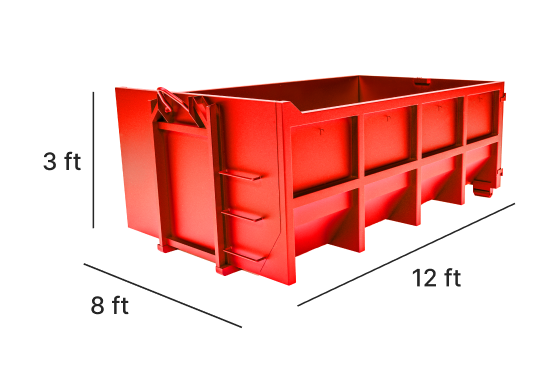
10-YARD DUMPSTER
10 yard dumpsters can hold about 3 pickup truck loads. Great for a spring cleaning like emptying your garage or basement.
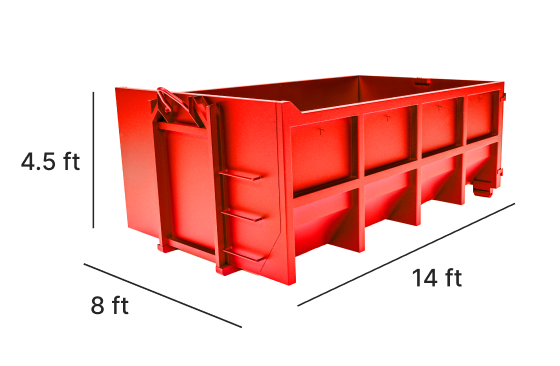
15-YARD DUMPSTER
15 yard dumpsters can hold about 4.5 pickup truck loads. Ideal for slightly larger garage or basement cleanouts.
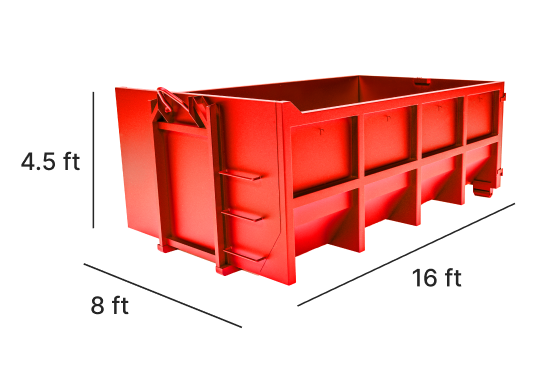
20-YARD DUMPSTER
20 yard dumpsters can hold about 6 pickup truck loads. Great for those remodeling or re-shingling a roof.

30-YARD DUMPSTER
30 yard dumpsters can hold about 9 pickup truck loads. Equipped for medium construction projects.
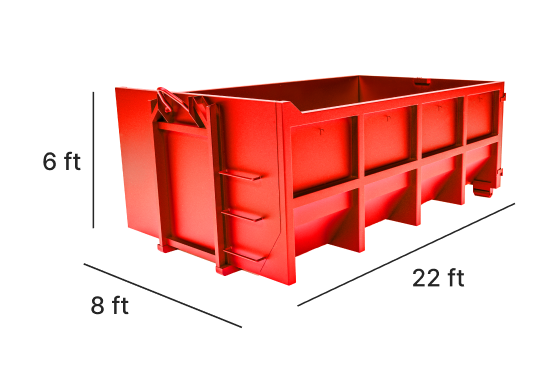
40-YARD DUMPSTER
40 yard dumpsters can hold about 12 pickup truck loads. The largest dumpster great for larger construction projects.
Clarendon Construction Waste Removal – Get a Dumpster Now
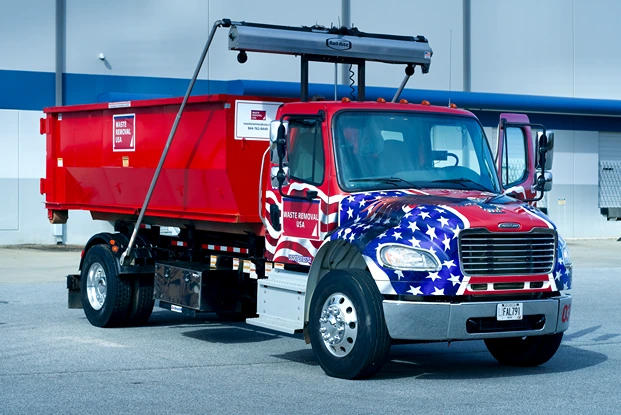
Image Credit: Rebekah Pruett Photography
Whether you need a construction dumpster rental delivered near Columbus County Muni Airport-CPC or Yogi Bear’s Jellystone Park at Daddy Joe’s, we can deliver it quickly to you. Even when construction projects pop up in Wilmington or Bolton, we can make sure you get the fast delivery that you need. Clean up smarter—book your dumpster now by calling 910-338-0901 .
Roll-Off Dumpsters for Flooring & Interior Renovation Waste
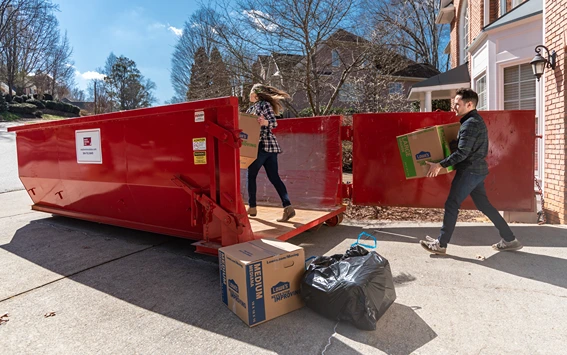
Image Credit: Rebekah Pruett Photography
Waste Removal USA provides specialized containers perfect for flooring, drywall, and cabinetry disposal. Our home containers arrive spotlessly clean, protecting new materials from dust and debris contamination during installation phases.
We position dumpsters to establish efficient workflow patterns that maintain productivity throughout interior updates. Customers appreciate our precise timing that keeps renovation waste managed properly without cluttering limited indoor workspace when replacing floors, walls, and fixtures.
Choosing the Right Dumpster in Clarendon – Easy & Affordable
Clarendon residents access Waste Removal USA‘s comprehensive range of dumpster sizes perfectly calibrated for local renovation needs. Our team provides expert guidance on selecting appropriate capacity based on your specific project scope and material types. Contact our Clarendon specialists today at 910-338-0901 to discuss your specific renovation requirements, email project details to sales@wasteremovalusa.com for personalized container recommendations, or secure your ideal dumpster through our simplified reservation system designed specifically for Clarendon property improvements.
Dumpster Rental Options at Waste Removal USA
Give us a call and we will set you up with the right dumpster for the job in your local area
Residential
Residential roll off dumpsters are great for household clean outs or clean-ups, yard debris removal and general junk removal.
Construction
Roll off dumpsters for residential & commercial construction debris are perfect for any home renovation job.
Yard Waste
If you are doing yardwork and need a roll off container for yard waste in & around your local area, we have you covered.
Concrete
Order a 10 yard or 20 yard roll off dumpsters for either "clean" concrete or "clean" dirt loads.
Roofing
Just as the name implies, roofing dumpster rentals are used for shingles and sheathing only.
Dumpster Size Comparison
|
Size |
Typical Dumpster Dimensions |
Estimated Capacity* |
|---|---|---|
|
14' long x 8' wide x 3.5' high |
3 pickup truck loads |
|
|
16' long x 8' wide x 4' high |
4.5 pickup truck loads |
|
|
20' long x 8' wide x 4' high |
6 pickup truck loads |
|
|
22' long x 8' wide x 6' high |
9 pickup truck loads |
|
|
22' long x 8' wide x 8' high |
12 pickup truck loads |
Read What Our Customers Are Saying
Clarendon, NC Dumpster Rental FAQ: How Rentals Work
Do flooring dumpsters have weight overage risks?
Flooring materials present significant weight overage risks due to deceptive density characteristics, with ceramic tile particularly problematic at approximately 18-20 pounds per square foot creating ton-level disposal weights for even modest residential applications. This density frequently triggers overweight charges when containers appear visually under-filled, with typical 15-yard containers reaching weight capacity at approximately 35-40% volume utilization when containing predominantly tile materials.
Natural stone, engineered quartz, and concrete flooring components create similar challenges, while wood products (hardwood, engineered flooring, laminate) present moderate density averaging 2-4 pounds per square foot depending on construction.
Can a roll-off dumpster handle wet or rotting deck wood?
Yes, standard containers accommodate wet or deteriorated deck materials despite increased weight characteristics, though consideration of weight limits remains essential during loading operations. Moisture saturation potentially doubles wood weight compared to dry equivalents, with severely deteriorated materials absorbing substantial additional water content particularly in ground-contact components showing advanced decomposition patterns.
Practical loading approaches involve mixing wet components with drier materials where possible, creating balanced weight distribution while utilizing natural drying effects during longer rental periods. For extensively saturated materials, consider weight-based container selection one size larger than volume requirements would typically indicate, providing adequate capacity for safe transportation while preventing overweight conditions potentially triggering supplemental fees significantly impacting project economics.
Can I fit a shower, tub, and vanity in a 10-yard dumpster?
Yes, standard bathroom fixture sets including shower enclosures, bathtubs, and vanity cabinets fit comfortably within 10-yard containers, typically occupying approximately 30-40% of available capacity depending on specific dimensions and construction types. This configuration leaves adequate remaining space for associated materials including drywall, flooring, and packaging components generated during standard bathroom renovation projects.
Fiberglass fixtures present minimal disposal challenges beyond basic dimensional considerations, while cast iron tubs require special attention to weight distribution rather than volume constraints. Placing heavier components centered on container floor areas improves weight balance during transportation, while breaking ceramic fixtures into manageable sections prevents handling injuries while improving space utilization through eliminated void areas created by intact installation configurations.
Is there a risk of fines for illegal items in foreclosure cleanouts?
Yes, substantial financial penalties potentially apply for prohibited materials discovered during disposal processing, with liability extending to property representatives managing foreclosure cleanouts rather than original property occupants. These enforcement actions reflect regulatory responsibility assignment to waste generators regardless of original ownership, placing compliance obligations on current property controllers during transitional possession periods regardless of abandonment circumstances.
Prevention requires systematic inspection before container loading, with particular attention to common prohibited categories including electronic waste, chemical products, refrigeration equipment, and tire disposal. When uncertain about specific material classifications, segregate questionable items for separate handling through appropriate specialized channels rather than risking contamination of entire loads potentially triggering comprehensive rejection during processing operations with associated return transportation and reloading requirements creating substantial additional project costs.
Can I include screws and fasteners in a scrap metal dumpster?
Yes, standard fasteners including screws, bolts, nails and associated hardware components create acceptable additions to dedicated metal recycling channels, qualifying as mixed ferrous materials despite dimensional variations. These components typically contribute minimal weight percentage to overall disposal volumes while maintaining full recovery value through standard processing operations designed specifically for varied metal waste streams.
Collection logistics favor container consolidation rather than fastener segregation for most residential applications, with material separation economically justified only for substantial industrial quantities generating significant independent handling value.
Are dumpsters discreet enough for hoarder cleanouts?
Standard roll-off containers present limited discretion for sensitive cleanout situations, with distinctive appearance and placement requirements creating unavoidable visibility within residential environments. These limitations frequently conflict with privacy preferences for hoarder remediation projects where family members typically prioritize confidentiality regarding condition severity and associated disposal requirements.
Alternative approaches include utilizing unmarked box trucks or trailers providing temporary loading capacity with reduced visibility characteristics, transferring contents to disposal facilities without extended on-site container presence. For extensive cleanouts requiring substantial capacity, scheduling strategic delivery timing minimizes neighborhood observation while requesting containers without prominent company branding reduces identifiable connections to specific cleanout services potentially indicating property conditions to surrounding residents.
Find Location
Preparing for Dumpster Delivery
Our Service Area in Clarendon
Customer Reviews
Hours
Monday - Friday8:00AM - 6:00PM











